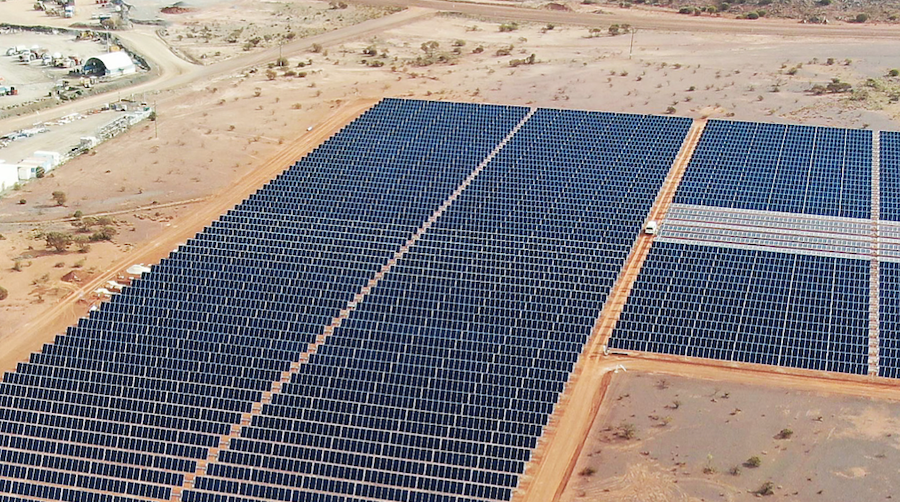2019 tipping point for renewable projects at mine sites – report

In a recent report, consultancy firm THEnergy stated that 2019 saw significant growth in the number of mining companies materially committing to develop onsite renewable energy projects.
“The year 2019 has been identified as the tipping point. The business case for partly substituting expensive fuel like diesel, heavy fuel oil (HFO) or gas by solar and wind had been positive on paper for years. However, actual projects have evolved slowly,” the report states. “[Yet] in 2019, almost a dozen new projects have been officially announced and at the same time many more projects are under development and on the verge of being announced.”
Australia and Sub-Saharan Africa are the epicentres of clean energy developments as both regions have substantial areas with insufficient public grids and excellent solar resources
THEnergy’s document is the result of the consultancy’s participation in the 7th Energy and Mines World Congress, which took place in Toronto this December and where some 100 miners met to discuss topics related to sustainable and environmentally-friendly solutions to their power needs.
At the event, most mining companies expressed they are willing to decarbonize and pursue initiatives that go well beyond renewables, such as electrification of mining vehicles. They also said that they are aware that such initiatives will further increase their electricity demand, which means that locally generated renewable energy sources have to be found.
Since the solutions that are being built now are more sophisticated than they were before and they allow for storing energy, miners said they have increased trust in the possibilities offered by clean energy and the minimized risks of production losses.
“Before, the general attitude was characterized by ‘wait and see,’ but the mode has been changing in 2019 to ‘let’s act now,’” THEnergy’s report reads. “Nick Holland, CEO of Gold Fields, a mining company that is a pioneer in integrating renewables, pointed out in his keynote that cost savings are possible, and a cost-efficient decentralization of power generation enabled by renewables comes with further advantages,” the brief adds.
Evidence presented during the congress showed that most newly announced projects combine different sources of renewable energy, such as solar and wind, as well as energy storage solutions.
The logic behind the mix is that solar and wind output is often negatively correlated, which means that when solar irradiation is high wind speeds are typically low, and vice versa. However, if both elements are in place, when one goes down the other can still maintain the energy supply.
Based on the presentations at the Toronto conference and its own research, THEnergy believes that the idea of mixing and matching energy sources could even see a renaissance of hydropower.
{{ commodity.name }}
{{ post.title }}
{{ post.date }}
Comments